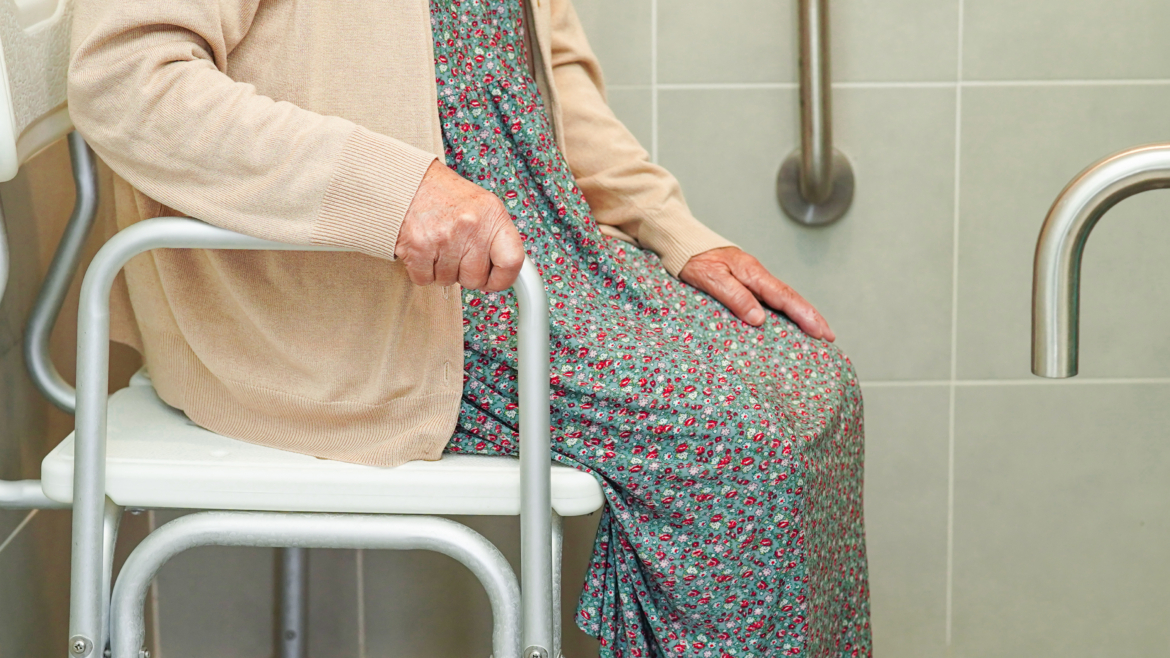How to Approach the Conversation of Bathroom Safety with Aging Parents
As our loved one’s age, their daily needs, habits, and lifestyles change alongside of them. The conversation surrounding their changing needs and safety becomes increasingly important, but this can often be challenging discussion to navigate. Especially when talking to elderly parents, they may not be completely comfortable turning to their children and asking for help, even when they may know they need it. Although many seniors want to remain in their homes as they age, it may not always be as safe as it once was for them to navigate alone. However, there are steps you can take to help keep them safe while keeping their independence.
Your bathroom may seem safe for you, but for aging parents, it could be similar to trying to move through a minefield of potential accidents. This is even more true if you have parents that have mobility issues and use a wheelchair or walker.
If you’re not quite sure how to approach the topic with your parents, here are a few tips on how to guide the conversation. We will address how to approach this sensitive conversation with empathy, understanding, and a focus on collaborative decision-making.
Understanding the Challenges
Before initiating a conversation, it’s important to recognize the challenges that may make your parents hesitant to discuss bathroom safety. The fear of losing independence, discomfort about physical limitations, and a simple misunderstanding of potential risks are common factors. Approach the conversation with empathy, acknowledging their feelings and concerns.
Educate Yourself
To effectively discuss bathroom safety, it’s crucial to educate yourself on the common challenges seniors face in this regard. Research potential hazards, such as slippery surfaces and lack of support, and familiarize yourself with available solutions, like grab bars, non-slip mats, and raised toilet seats. Being informed will not only help you address your parents’ concerns but also demonstrate your commitment to their well-being.
Choosing the Right Time and Place
The setting and timing of the conversation may play a significant role in its success. Select a comfortable and private space where everyone can openly express their thoughts without fear of judgment. Choose a time when everyone is relaxed and not rushed, allowing for a more thoughtful and comprehensive discussion.
Opening the Conversation
Initiating the conversation requires a delicate approach. You may start by expressing your love and concern for your parents’ well-being. Use “I” statements to convey your feelings and avoid sounding accusatory. Sharing relevant statistics or personal stories about the frequency of bathroom-related accidents among seniors can emphasize the importance of the discussion.
Active Listening and Acknowledging Concerns
Once the conversation has started, be sure to engage in active listening. Encourage your parents to share their feelings, fears, and hesitations. Demonstrate empathy and understanding, acknowledging their concerns without judgment. This step is crucial in fostering an open and honest dialogue, laying the foundation for collaborative decision-making.
Presenting Solutions
After establishing an understanding of your parents’ concerns, introduce potential solutions. Discuss practical changes like installing bathroom safety equipment, emphasizing their role in maintaining independence and preventing accidents.
Involving Healthcare Professionals
Highlight the importance of seeking advice from healthcare professionals. Suggest consulting with a doctor, occupational therapist, or home safety expert. Emphasize that these professionals are allies in enhancing independence rather than restricting it. Reassure your parents that involving experts is a positive step toward ensuring their safety and well-being.
Collaborative Decision-Making
Propose a collaborative approach in making decisions about bathroom safety. Involve your parents in the process of choosing safety solutions and modifications if they are able. Discuss the potential positive impact these changes can have on their daily lives. By making the conversation a joint effort, you empower your parents to actively participate in decisions that directly affect their lives.
Discussing bathroom safety with aging parents can be a delicate yet necessary conversation. It requires empathy, understanding, and a commitment to collaborative decision-making. By recognizing the challenges, educating yourself, choosing the right time and place, opening the conversation with sensitivity, and actively listening, you can lay the groundwork for a productive discussion. Presenting practical solutions and involving healthcare professionals further demonstrate your dedication to ensuring your parents’ safety and maintaining their independence.
As you navigate this conversation, remember that it’s an ongoing process. Encourage open communication, be patient with the adjustment period, and provide continuous support. By approaching bathroom safety with compassion and empathy, you contribute to creating a living environment that prioritizes both safety and the autonomy of your aging parents.



